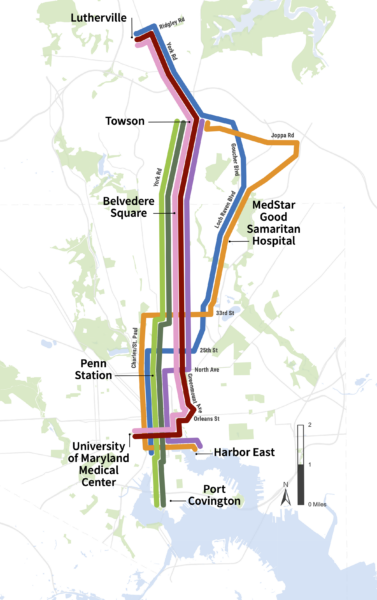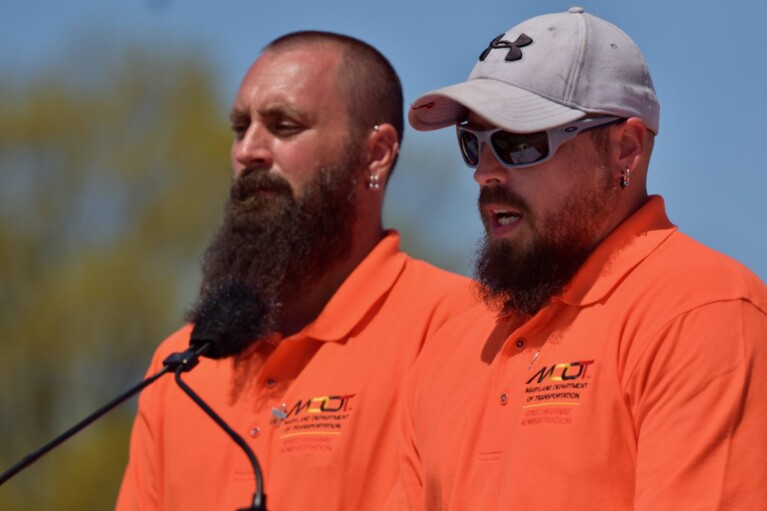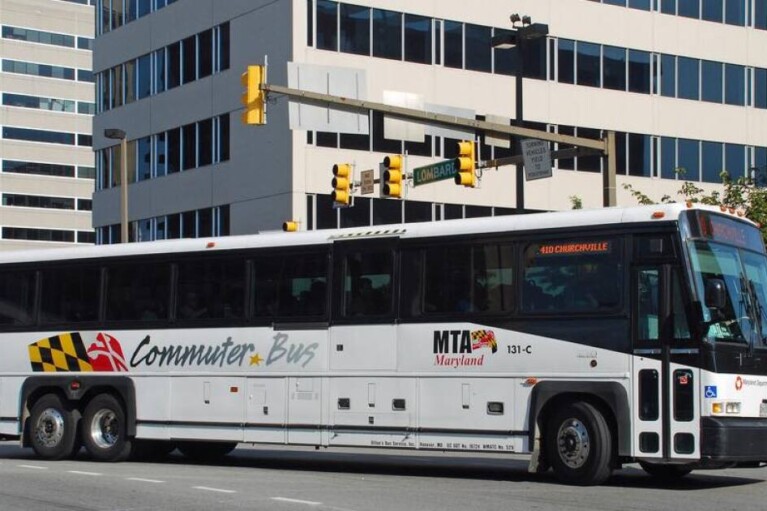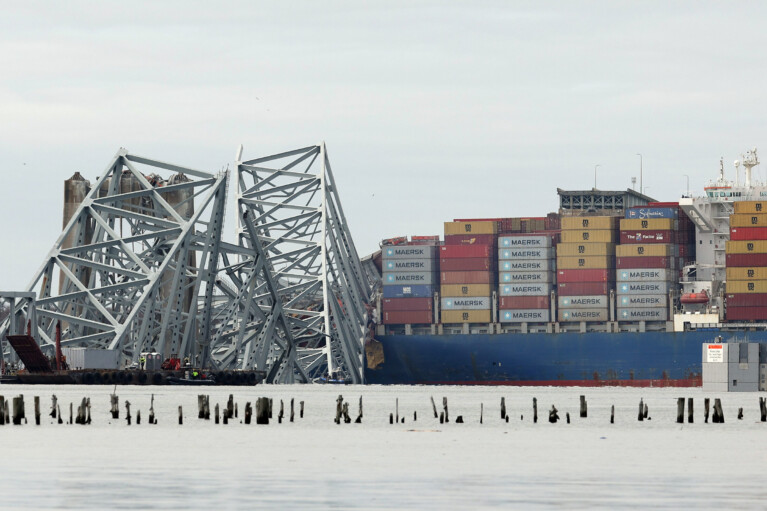Baltimore area transit advocates get first look at potential north-south alignments

Two years after the launch of a major push to improve bus and rail service throughout the state, the Maryland Transit Administration has unveiled a list of potential north-south projects in the Baltimore region.
The seven potential alignments released on Thursday were prepared in coordination with Baltimore and Baltimore County. As with the potential east-west projects unveiled over the summer, officials hope the list generates feedback from the public.
The state’s top transit official said local input was helpful in crafting alternatives that have the potential to move people between Towson and Baltimore City equitably.
“MTA is excited to be working with our local partners to improve critical transit connections from Towson to Downtown Baltimore and improve access to jobs, education and recreation,” Administrator Holly Arnold said in a statement.
“This is another significant step in the continued effort to build an equitable rapid transit network, and the public’s input is invaluable to the process.”
As with the east-west study, the seven north-south alignments were fashioned based on public input, an analysis of travel patterns and existing transit ridership and land use. The proposed preliminary alternatives overlap with the most utilized routes in the local bus network, the agency said in a statement.
The alternatives include a mix of heavy rail, light rail and bus rapid transit. Costs and construction times vary accordingly.
 These are the seven preliminary alignments:
These are the seven preliminary alignments:
- A light rail transit line from Lutherville to the University of Maryland Medical Center (UMMC) via Ridgely Road, York Road, Greenmount Avenue, Orleans Street, St. Paul Street and Baltimore/Fayette streets;
- A bus rapid transit line from Lutherville to UMMC via Ridgely Road, York Road, Greenmount Avenue, Hillen Avenue/Gay Street and Baltimore/Fayette streets;
- Bus rapid transit from Towson to Harbor East via York Road/Greenmount Avenue, North Avenue, Penn Station, Charles/St. Paul streets, and President Street;
- A heavy rail (Metro SubwayLink) line from Towson to Port Covington via York Road/Greenmount Avenue, 33rd Street, Charles/St. Paul streets, Penn Station and Hanover Street;
- Bus rapid transit from Towson to Port Covington via York Road/Greenmount Avenue, 33rd Street, Charles/St. Paul streets, Penn Station and Hanover Street;
- Light rail transit from Lutherville to Otterbein via Ridgley Road, York Road, Fairmount Avenue, Goucher Boulevard, Loch Raven Boulevard, 25th Street, Charles/St. Paul streets, Penn Station and Conway Street; and
- Bus rapid transit from Towson to Harbor East via Joppa Road, Loch Raven Boulevard, The Alameda, 33rd Street, Charles/St. Paul streets, Penn Station, Pratt/Lombard streets and President Street
The Baltimore area’s transit network is skimpy for a region its size, and transit users have long complained that buses routinely arrive late or not at all. Release of the two sets of potential transit lines comes during a period of increased criticism of the Transit Administration, which has had to cut service because of a personnel shortage.
State Sen. Cory McCray (D-Baltimore), chair of the Senate Budget and Taxation subcommittee on public safety, transportation and environment, expressed hope that the next governor takes the issue head-on.
“Under the Hogan administration, the MTA bus system for the Baltimore region has been an utter failure,” he said. “The challenges of the bus just making it has been super-problematic over the past seven-eight years.”
McCray said his family has a car, so if his daughter’s bus doesn’t arrive, they can get her to school. But many people — those who need to get to work on time and seniors who need to pick up prescriptions or groceries, for example — aren’t as fortunate, he said.
“That inability to deliver that basic service that we’re all supposed to have is a big issue,” he said.
Brian O’Malley, head of the Central Maryland Transportation Alliance, expressed optimism about the decision to prioritize rail and bus rapid transit systems where bus ridership is already strong.
“That’s a proven strategy to grow transit ridership,” he said. “You feed the demand. Your run more frequent service — and in some cases more higher-capacity cars — where it’s already busy.”
The public can learn more about the routes under consideration and provide feedback by going to the project website.




 Creative Commons Attribution
Creative Commons Attribution